A sideboard often sits in our homes like an empty canvas, full of promise yet somehow intimidating. You may walk past it daily, unsure how to transform this plain piece of furniture into something that catches the eye and warms your space.
Think of your sideboard as more than just a surface for storage. When styled thoughtfully, it becomes a focal point that sets the room's mood, shows off your personality, and adds practical value to your living space.
This guide will walk you through proven design principles, must-have decorative elements, and practical styling steps. You'll learn how to adapt these ideas to different sideboard sizes and seasons, helping you create a look you'll love.
Essential Rules for Styling Your Sideboards
You don't have to follow fashion trends exactly when arranging your sideboards. The key is to understand some basic principles for creating visual harmony and appeal, which will help you to arrange your furnishings better.
Balance is Key
Picture your sideboard decor like a balancing swing. Your goal is to spread the visual weight – how heavy items look – evenly across the surface. This keeps your display from looking lopsided.
You can style your sideboard in two ways. A formal look needs matching items on both sides, like twin lamps or vases.
For a more casual vibe, try different pieces with similar visual weights. A tall lamp on one end can balance with a stack of books topped by a medium vase on the other.
Pro designers often use the golden ratio rule to create natural-looking displays. Try placing a statement piece like a vase slightly off-center – about 1/5 to 1/9 from the middle. This subtle shift makes your arrangement feel more purposeful and refined.
Play with Height
A sideboard display needs variation in height to avoid looking flat and lifeless. When you mix items of different heights, your eyes naturally move up and down the arrangement, creating visual interest.
Start with tall pieces like a statement lamp or slender vase. Add medium-height objects such as framed photos or small sculptures. Complete the look with low items like decorative bowls or trays.
Need to elevate smaller pieces? Stack a few books underneath them or use decorative stands to create different levels.
The Power of Layering
Creating depth on your sideboard starts with smart placement. Put taller items toward the back and shorter pieces in front, working from side to front.
Let smaller pieces overlap slightly with taller ones behind them. Try placing small artwork in front of larger pieces or a mirror. This setup against a wall adds visual interest to your space.
Texture Talks
Your sideboard decor isn't just about what you see - it's also about what you can touch. Different textures create depth and visual interest in your display.
Try mixing materials to build an eye-catching arrangement. Place rough wooden items next to smooth ceramics, or pair shiny metals with soft fabrics.
A woven basket beside a glossy vase adds contrast, while a metal tray can anchor a group of pottery pieces.
Color Cohesion
Your sideboard style should reflect your personality, but keeping colors in check prevents a messy look.
Pick two or three main colors that match your existing room elements, like your wall paint or furniture fabric. Add neutral tones to tie everything together for a polished appearance.
For a foolproof approach, use the 60-30-10 rule. Choose a dominant color for 60% of your display, a secondary color for 30%, and an accent color for the remaining 10%.
Negative Space
The empty areas around your sideboard matter just as much as the decor you put on it. By leaving open spaces between items, you create visual breaks that keep your sideboard from looking messy. When you crowd too many pieces together, nothing stands out.

Pictured is the Brixston Modern Sideboard. The wood finish and gold-colored metal handles create an understated decorative effect that adds elegance to your home.
What Sideboard Decor Elements Should You Use?
Choosing the right decorations and finding the right place to put them will make your space more harmonious. Let's put the basic decorative elements together in a simple toolkit for you to use.
Lighting (Lamps & Candles)
Your lighting choices can make or break your sideboard's overall look. When picking lamps, make sure they match your room's style and size.
A common mistake is putting tiny lamps on a large sideboard – this throws off the balance of your space.
You have several options for lamp placement. Put matching lamps on both ends for a classic look, or try one bigger lamp on one side for something different. For a modern touch, you might want to add LED strips under your sideboard.
Place your lamps where they make sense – usually at the ends or one side of your sideboard.
Want to add some warmth? Group a few candle holders together. They work great alone or with your lamps to create the right mood.
Wall Decor (Art & Mirrors)
Wall decor serves as the backdrop for your sideboard display. You can hang artwork traditionally or lean it casually against the wall.
For added visual interest, try stacking multiple pieces. Just make sure your chosen pieces match your room's theme and color scheme.
Size matters when selecting artwork. Many people make the mistake of choosing pieces that are too small. Your art should be about two-thirds the width of your sideboard.
When hanging, place the bottom edge 4 to 8 inches above the sideboard's surface. A single large piece often creates more impact than several small ones.

Mirrors do double duty by reflecting light and making your space feel larger. This works especially well in small or dark rooms.
The shape of your mirror affects the overall style - a round mirror softens a linear sideboard, while rectangular mirrors create a more formal look.
For mirrors, stick to eye-level placement and consider what they'll reflect. You don't want your mirror showcasing cluttered areas or unattractive views.
Like artwork, your mirror should follow similar size proportions relative to your sideboard.
Plants & Florals
Plants and flowers do more than look pretty. They bring life and natural texture to your sideboard while helping clean the air in your room.
For easy care, try hardy varieties like succulents or snake plants. Place larger plants beside your sideboard, and save the top for smaller ones. Pick containers that match your decor style to create a cohesive look.
When arranging plants, try grouping three or five small pots for visual impact. Flowers or branches in a vase add a seasonal touch, changing with the time of year.
Books
Books bring more than just reading material to your sideboard - they add visual weight and color to your space. Choose coffee table books with strong covers and appealing designs that match your room's style.
Try different arrangements with your books. Stack them upright to create height variation, or lay them flat to make platforms for smaller decor pieces. You can even leave a book open to display beautiful illustrations or photographs.
When selecting books, focus on topics that reflect your interests and complement your home's theme. Art, architecture, or photography books often work well since they typically have attractive spines and covers.
Containment (Trays, Bowls, Baskets)
Trays, bowls, and baskets are your best tools for keeping sideboard items tidy and purposeful.
These pieces prevent clutter while adding visual interest to your space. Choose materials that match your style, like warm wood, textured rattan, sleek metal, or smooth ceramics.
A simple tray can corral your daily essentials like keys and small decor pieces. Natural bowls work well for fresh fruit or decorative objects, while woven baskets bring warmth and practical storage to your sideboard setup.
Personal Items
Adding personal items to your sideboard transforms it from a simple furniture piece into a meaningful display. Family heirlooms, travel souvenirs, and cherished sculptures can tell your unique story while adding visual interest.
Consider grouping family photos in clusters instead of spreading them out. This creates a stronger focal point and keeps the display from looking cluttered.
When arranging personal items, work in groups of three or five - this is a classic design principle that creates balance.

How Can You Style a Sideboard Step-by-Step?
Decorating a sideboard is a process of building layers and optimizing the composition. Follow these steps to structure your work:
Step 1: Start Fresh
Begin by clearing and cleaning your sideboard's surface and the wall above it. A thorough cleaning gives you a blank canvas to work with.
Take a quick photo before you start – it helps you see how far you've come and track your progress.
Step 2: Place Your Anchor
Choose a focal point that draws attention. Mount a large mirror or artwork above the sideboard, or place a statement chandelier overhead.
Your anchor piece should take up about two-thirds of the sideboard's width to create the right visual balance.
Step 3: Add Height
Frame your anchor piece with items of varying heights. Position tall lamps or vases at different points to create visual flow.
You might add branches or dried flowers to tall vessels near the ends. This variety in height keeps your eyes moving across the display.
Step 4: Layer In Medium & Small Objects
Build depth by adding medium and small decorative pieces. Place books, bowls, or small sculptures in groups of three or five.
Use trays to gather smaller items like candles or trinkets. Position items from back to front, creating layers that add visual interest.
Step 5: Incorporate Texture & Life
Add elements that make your display feel alive and touchable. Mix in some greenery or fresh flowers.
Include items with different textures – perhaps a ceramic vase next to a wooden box. A metallic frame or bowl can add a subtle shine.
Step 6: Review & Refine
Step back and look at your display. Take a photo to spot any imbalances. Check that heights vary naturally and colors flow well.
Remove anything that feels forced or creates clutter. Leave some space – this helps your display feel intentional rather than crowded.
How Do You Style Sideboards of Different Sizes?
Small or Narrow Sideboards
When styling a small sideboard, focus on making a strong impact while keeping the space neat. A few carefully chosen large items work better than several small ones, which can look cluttered.
Start by adding vertical elements to draw the eye upward. A tall lamp or vase with branches can create height, while a mirror or artwork above the sideboard helps the room feel larger. You can add depth by mounting shelves or wall lamps above the piece.
Keep surface decorations minimal but meaningful. A mirror is particularly useful as it reflects light and creates the illusion of more space.
Remember that leaving some space helps maintain a clean, organized look that makes your room feel more open.
Long Sideboards
When styling a long sideboard, your main challenge is preventing it from looking scattered or monotonous. You can create distinct visual zones along the length to break up space effectively.
Try placing three matching items, like ceramic vases or framed photos, at equal distances. This adds rhythm and visual interest to your display.
Balance plays a key role in the overall look. Consider using matching table lamps at each end to create symmetry. Focus your decorative items on the middle two-thirds of the surface rather than filling the entire length.
Add depth to your display through layering. Place taller items toward the back and shorter ones in front. This creates an engaging arrangement that draws the eye across the piece naturally.

This Colemen Wood Sideboard Buffet adds depth to your space with its stylish vertical slat design and metal accents, giving your room a more designer feel.
How Can You Refresh Your Sideboard for the Season?
With seasonal tweaks, the sideboard display stays fresh and relevant all year round.
Core Strategy
When refreshing your sideboard, keep key items neutral. A balanced pair of table lamps, a striking mirror or artwork, and versatile trays create a timeless base. These core items stay in place while you rotate smaller decorative pieces to match each season's spirit.
Spring
Breathe new life into your sideboard with light, airy touches. Switch heavy textiles for crisp linens in soft mint green, blush pink, or buttercup yellow.
Fresh tulips or peonies in simple vases bring natural charm. For a subtle seasonal nod, try placing decorative eggs in shallow bowls or hanging delicate paper ornaments on flowering branches.
Summer
Create a casual, sun-soaked display that captures summer's relaxed mood. Fill clear jars with collected shells, coral pieces, or smooth driftwood. Add pops of vibrant coral pink or ocean blue through small accessories.
Tropical plants, whether real or faux, add a vacation vibe. Display cherished beach photos or coastal artwork to complete the seasonal story.
Autumn
Work with a rich palette of berry red, dark orange, and chocolate brown. Natural elements like small pumpkins, pinecones, and dried flowers bring outdoor beauty inside.
Layer in wool throws for texture, and group pillar candles for warm ambiance. A neat stack of firewood nearby enhances the seasonal feel.
Winter
In winter, transition to festive or cozy décor. Build your display around a cohesive color scheme - perhaps classic red and green or sophisticated metallics.
Showcase special holiday cards and wrapped gifts. Brass candlesticks and gold trays add warmth and sparkle. After the holidays, shift to cozy textures and winter whites, keeping evergreen sprigs for natural charm.
Conclusion
Decorating a sideboard lets you add your personal touch to your space, turning a simple piece of furniture into something special. With basic design principles like balancing items and varying heights, you can create an eye-catching display that works with your room's style.
Remember to pick items that mean something to you and match your home's look. Start with larger pieces as anchors, then add smaller items to create depth and interest.
Have you tried decorating your sideboard? We'd love to see your results. Share your photos and tell us about your experience in the comments. Did you find these tips helpful? If this guide helped you, share it with a friend who's looking for decoration ideas.
More Decorating Ideas:
Farmhouse TV Stand Decor Ideas


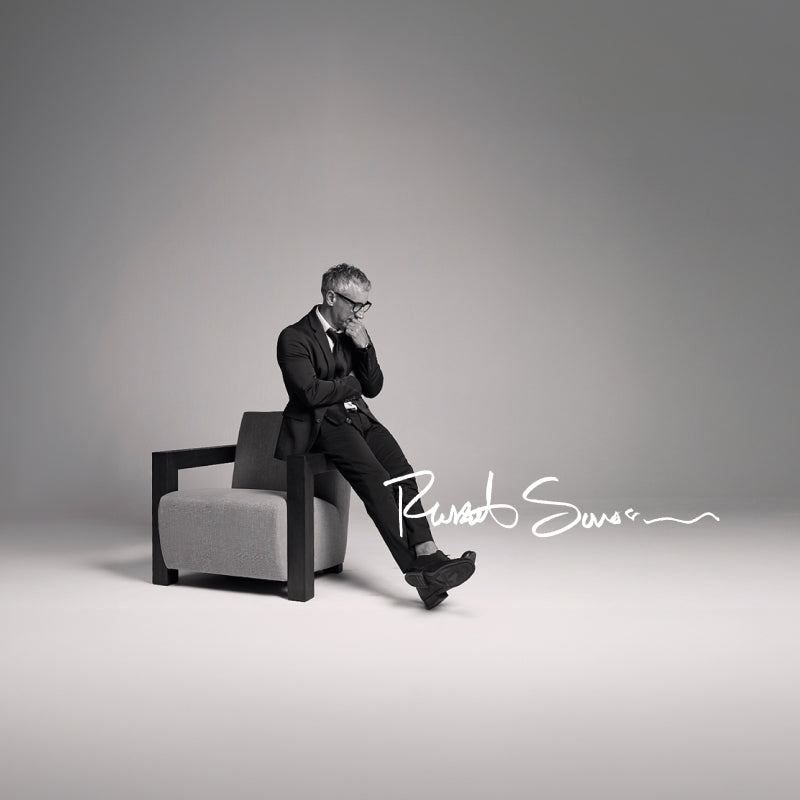
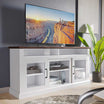
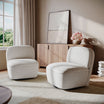
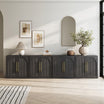
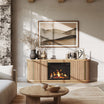


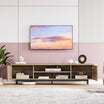
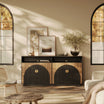
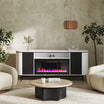
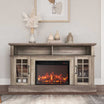
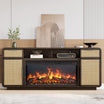
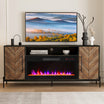
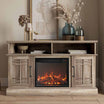
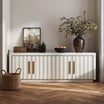
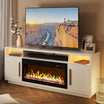
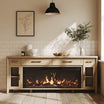
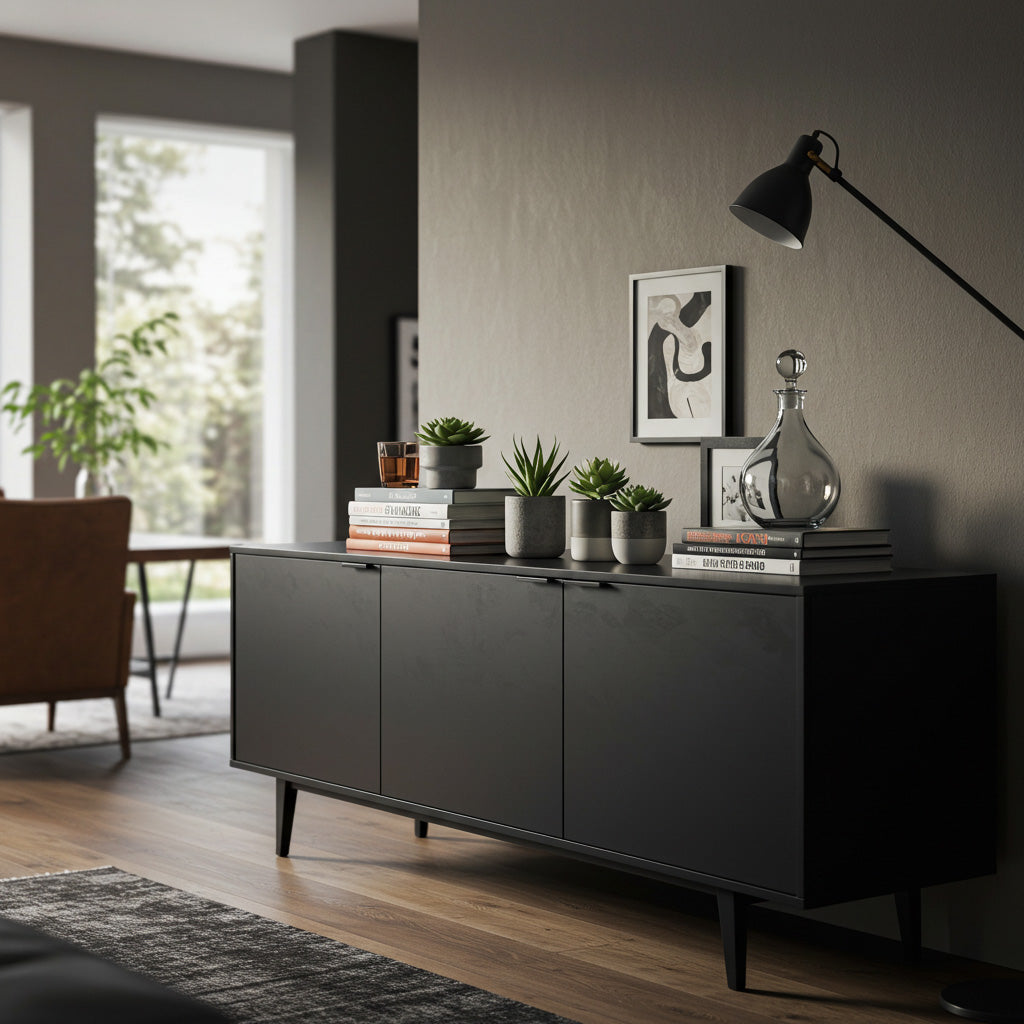
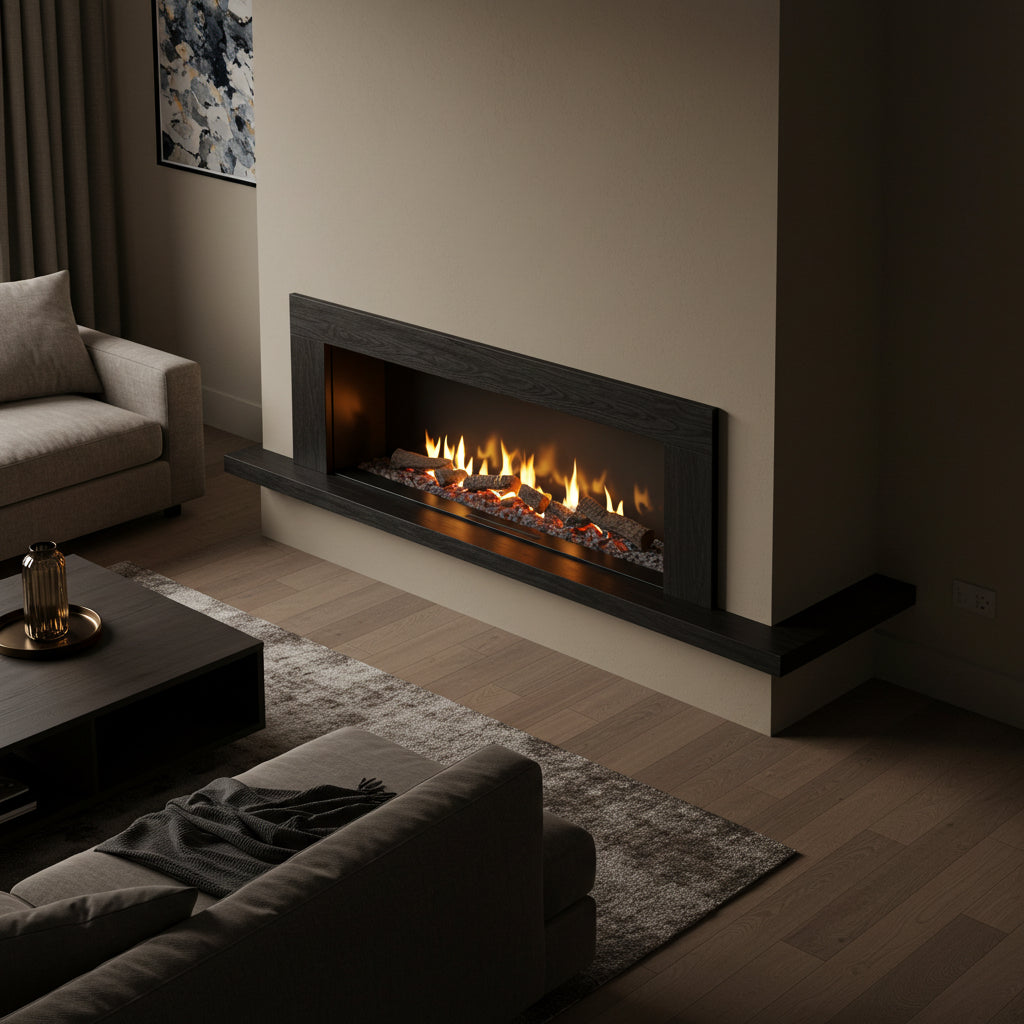
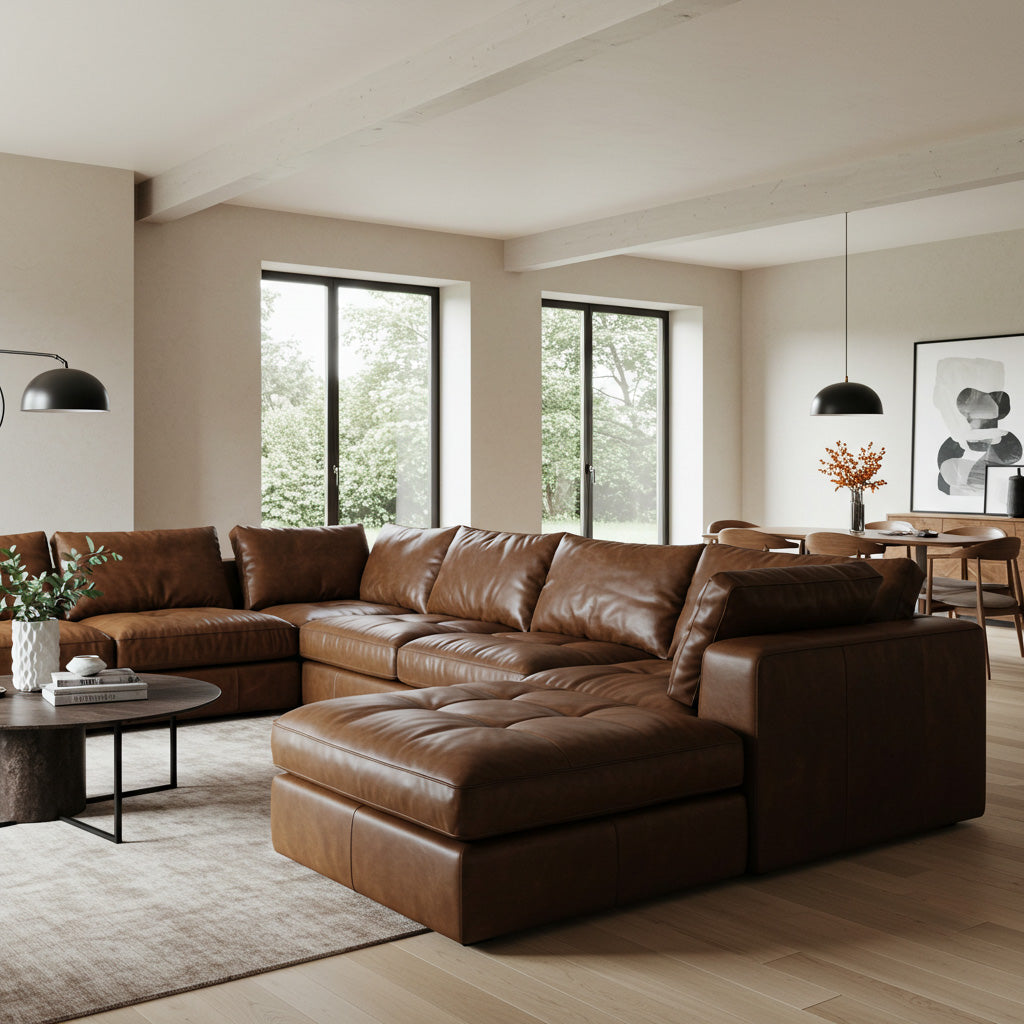
Leave a comment
This site is protected by hCaptcha and the hCaptcha Privacy Policy and Terms of Service apply.